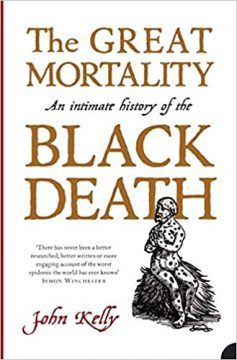Ed Simon in The Millions:
 Less than a century after the Black Death descended into Europe and killed 75 million people—as much as 60 percent of the population (90% in some places) dead in the five years after 1347—an anonymous Alsatian engraver with the fantastic appellation of “Master of the Playing Cards” saw fit to depict St. Sebastian: the patron saint of plague victims. Making his name, literally, from the series of playing cards he produced at the moment when the pastime first became popular in Germany, the engraver decorated his suits with bears and wolves, lions and birds, flowers and woodwoses. The Master of Playing Cards’s largest engraving, however, was the aforementioned depiction of the unfortunate third-century martyr who suffered by order of the Emperor Diocletian. A violent image, but even several generations after the worst of the Black Death, and Sebastian still resonated with the populace, who remembered that “To many Europeans, the pestilence seemed to be the punishment of a wrathful Creator,” as John Kelly notes in The Great Mortality: An Intimate History of the Black Death, the Most Devastating Plague of all Time.
Less than a century after the Black Death descended into Europe and killed 75 million people—as much as 60 percent of the population (90% in some places) dead in the five years after 1347—an anonymous Alsatian engraver with the fantastic appellation of “Master of the Playing Cards” saw fit to depict St. Sebastian: the patron saint of plague victims. Making his name, literally, from the series of playing cards he produced at the moment when the pastime first became popular in Germany, the engraver decorated his suits with bears and wolves, lions and birds, flowers and woodwoses. The Master of Playing Cards’s largest engraving, however, was the aforementioned depiction of the unfortunate third-century martyr who suffered by order of the Emperor Diocletian. A violent image, but even several generations after the worst of the Black Death, and Sebastian still resonated with the populace, who remembered that “To many Europeans, the pestilence seemed to be the punishment of a wrathful Creator,” as John Kelly notes in The Great Mortality: An Intimate History of the Black Death, the Most Devastating Plague of all Time.
The cult of Sebastian had grown in the years between the Black Death and the engraving, and during that interim the ancient martyr had become associated with plague victims.
More here.
